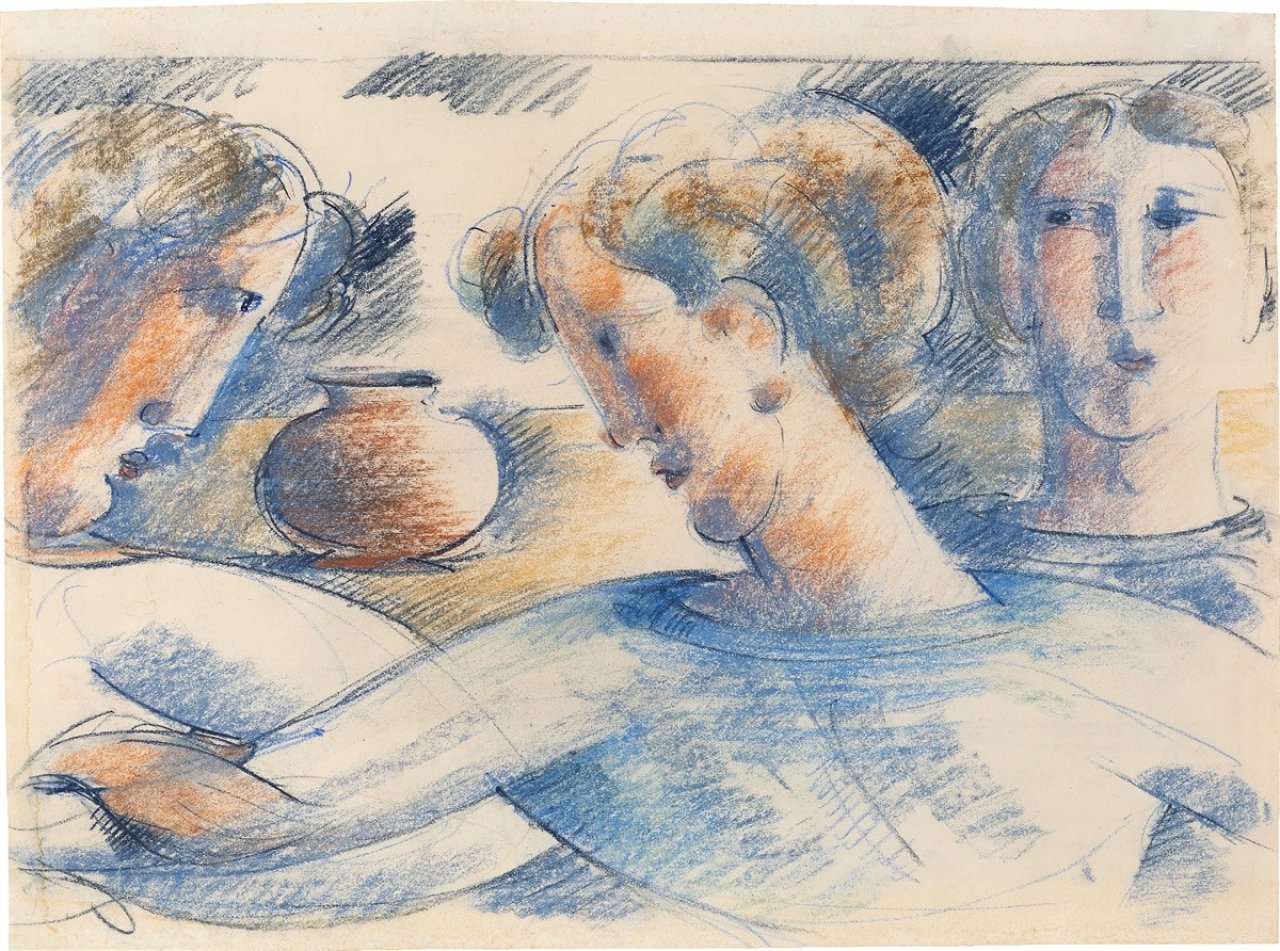Grisebach is pleased to announce the first highlight of the upcoming Winter Auctions (27 & 28 November 2025): the collection that is part of the Walter Bauer estate and has remained hidden from the public for decades. It comprises a curated selection of 120 paintings, sculptures, watercolours and drawings, woodcuts, etchings and lithographs – two centuries of German art spanning the Classicism and Expressionism eras up to the post-war period with a total median estimate of EUR 3 million.
Walter Bauer (1901–1968) was an Expressionist art enthusiast who worked hard to help rehabilitate the artists who had been ostracised during the Nazi regime. These included Paula Modersohn-Becker, members of the “Die Brücke” artists group such as Emil Nolde und Ernst Ludwig Kirchner, Lovis Corinth, Ernst Barlach, Max Beckmann, Oskar Schlemmer, Käthe Kollwitz, Hans Hartung, Ernst Wilhelm Nay and others who epitomise his curiosity and passion for modernism. One of the top lots is Paula Modersohn-Becker’s emblematic “Selbstbildnis nach halblinks” dated 1906, in which the artist depicts herself as strong and confident (estimate EUR 250,000–350,000). “Stilleben P (Grüner Hintergrund, Hirsch, Kopf)” painted in 1915, which is also on display in the museum, dates from Emil Nolde’s most productive creative phase. The painting was originally shown at the Dresden State Art Collections Old Masters Picture Gallery before it was confiscated by the German Reich in 1937 (EUR 250,000–350,000).
Another highlight is Edvard Munch’s self-ironic lithograph entitled “Selbstporträt mit Knochenarm”, which is one of the most important portraits in his oeuvre (EUR 40,000–60,000). The collection is the result of a fruitful collaboration between the collector and the museum expert and former director of Hamburger Kunsthalle, Carl Georg Heise.
Born in Heilbronn in 1901, Walter Bauer studied economics and joined Berliner Handels AG, a company that was part of the group owned by lignite magnate Julius Petschek, as assistant manager in 1924. The Petschek Group accounted for more than half of the European lignite trade. In 1928, Bauer also became managing director of Thüringische Kohlen- und Brikettverkaufsgesellschaft Leipzig, another Petschek Group company, remaining there until 1938 when he started his own business in Fulda after the Petschek family was expropriated in the course of the Nazi “Aryanisation”. Even after 1945, he remained on friendly terms with emigrated members of the Petschek family. During the National Socialist era, Walter Bauer joined the oppositional Confessing Church and the Freiburg “Bonhoeffer Circle”. After Bonhoeffer’s arrest, Walter Bauer was also imprisoned in 1944 but was released shortly before the end of the war in 1945. In 1950, Walter Bauer was appointed by the German government as a member of the German delegation to the Paris Six-Power Conference, which led to the establishment of the European Coal and Steel Community, and was appointed as a trustee in charge of unbundling the corporate coal trade in the American zone. He also became involved in the Protestant Church and co-founded the “20 July 1944 Relief Organisation”. Walter Bauer died in Fulda in 1968.
His close ties with Carl Georg Heise, one of the most influential art historians of the 20th century and Director of the St. Annen Museum in Lübeck (1920 to 1933) and the Hamburger Kunsthalle (1945 to 1955), had a lasting impact on the development of Walter Bauer’s collection of German drawing art. During the Nazi era, the art market was extremely ambivalent. Modernist art was ostracised, confiscated and defamed in the “Degenerate Art” exhibition of 1937. The extensive cleansing of the museums from August 1937 onwards preceded Hitler’s decision on 1 May 1938 to confiscate what he deemed to be “degenerate art”. Bauer was able to obtain a number of works during the sale of “degenerate art” for foreign currency by four officially appointed dealers – Bernhard A. Böhmer, Karl Buchholz, Hildebrand Gurlitt and Ferdinand Möller – in a deal brokered by Carl Georg Heise with Ferdinand Möller for four former Lübeck works including “Paar am Fenster” by Karl Hofer dated 1925 (via Bernhard A. Böhmer) and “Selbstbildnis nach halblinks” dated 1906 by Paula Modersohn-Becker as well as Emil Nolde’s “Stilleben P (Grüner Hintergrund, Hirsch, Kopf)” dated 1915. Ernst Barlach’s wooden sculpture “Der Wartende”, stolen from the State Museum in Saarbrücken in 1924, was also sold to Walter Bauer by Heise via Bernhard Böhmer in 1940.
When Carl Georg Heise became director of the Hamburger Kunsthalle in 1945 he remained in contact with Walter Bauer. Heise persuaded the collector to loan 16 works for the “Hundred Years of German Painting” exhibition at the Hamburger Kunsthalle and subsequently convinced him to provide some works to the Kunsthalle on permanent loan. During the 1950s Heise attended auctions on behalf of Bauer. It was during this period that the bulk of the collection was purchased. In 1967, a selection of the best works in the collection were presented to the public for the first time in Karlsruhe. This was the last time they were on public display. Grisebach is auctioning a unique chapter in German art history with the Walter Bauer Collection.
